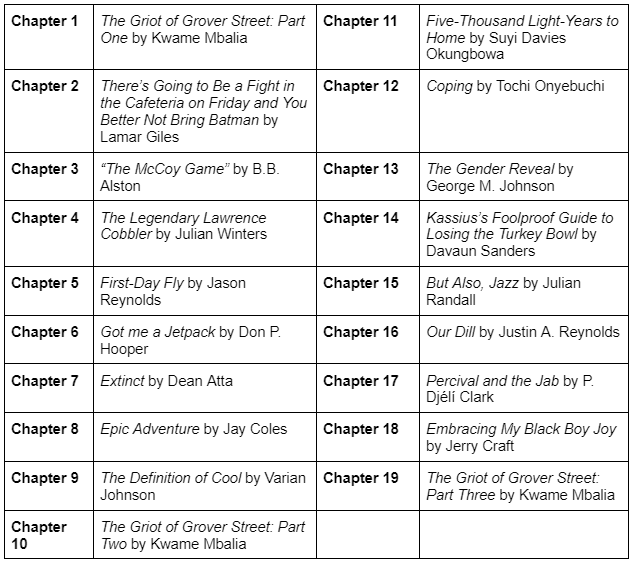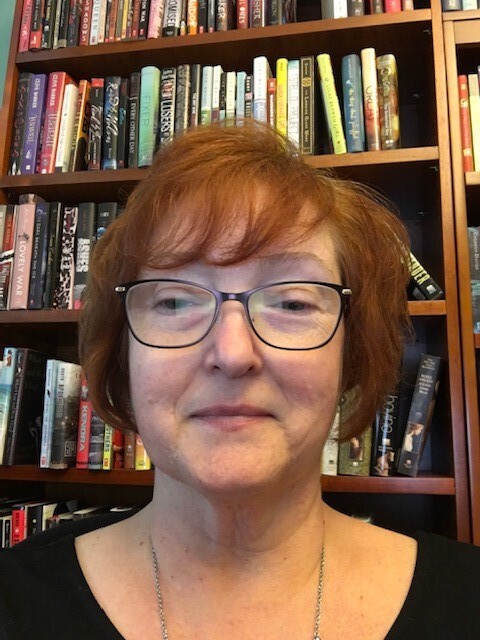As English teachers and educators continue to advocate for the inclusion of young adult literature that is representative of the lived experiences of today’s students, we must remember it is not enough to simply include historically and currently marginalized communities. We must consider how characters are portrayed and positioned in the texts we choose. In many classroom texts when characters of color are included they feature experiences rooted in trauma. While it is important to acknowledge and understand the history and pain of these communities, it is equally as important that students have windows and mirrors (Sims Bishop, 1990) that portray the joy and celebration within these communities.
When considering books teachers can incorporate to teach for joy, instantly the anthology Black Boy Joy edited by Kwame Mbalia comes to mind. Just looking at the cover alone, brings a smile to your face. The gold lettering against the robin egg blue background with the smiling face of a Black boy, is bright and hopeful.
- In search of science fiction? Chapter 3 features a pair of cousins who have to work their way through a technology driven house to win a prize left by their deceased grandfather. In Chapter 6 the main character learns his parents have been living a secret life as intergalactic racers.
- Teaching a lesson on dialect? Consider using Chapter 14, which features African American Language.
- Looking for a text that features the main character dealing with grief? Consider incorporating Chapter 15, where the main character uses music as a way to honor a friend who has passed and bring his community together.
- Want to incorporate texts that feature your students' interests? The main character of Chapter 8 is a talented artist. The main character of Chapter 9 loves to dance to the music of his favorite bands. Chapter 11 includes characters who like to solve puzzles. Chapter 12 has a character who wants to be famous for his skateboarding skills.
The short stories can be used in a plethora of ways to support English language arts learning. Below are a few suggestions of how the chapters can be used as stand alone pieces:
- Figurative Language Scavenger Hunt
- Review figurative language definitions (alliteration, onomatopoeia, imagery, simile, metaphor, and hyperbole) with students
- Have students read an assigned chapter (or multiple chapters) and identity as many examples of figurative language as they can (e.g., Alliteration can be found in Chapter 4, onomatopoeia and hyperbole can be found in Chapter 6, similes can be found in Chapter 15, Chapter 8 includes examples of imagery)
- You can provide students who need scaffolded instruction specific page numbers to look on.
- Creative Writing
- In Chapter 6 Rodney learns his parents are intergalactic racers competing for the fate of Earth. Have students write the next part of the story answering the prompt: What happens next to Rodney and his parents?
- At the end of his chapter, author Dean Atta provides insight into his process for writing his chapter in verse. Have students write a poem about someone special in their lives uses Chapter 7 as a mentor text.
Black Boy Joy can also be enjoyed as a whole class novel. Here are a few suggestions for whole-novel use:
- Read Aloud. Read one chapter a day/week as an opening or closing for class. Additionally, you can use this time to suggest other work by the book contributors. For example,
- If you liked this chapter by Kwame Mbalia, you should read Tristan Strong Punches a Hole in the Sky
- If you liked this graphic novel chapter by Jerry Craft, you should read New Kid
- Author Profiles. Have students research the author of their favorite chapter and create an author profile to share with others in your school community. Students can create infographics with the information they learn that can be posted around your classroom or school to bring awareness to this author and their work. Students can consider the following when researching:
- What biographical information can you find about this author?
- Why did they become an author?
- How do the lived experiences of the author influence their writing?
- What other work has this author written?
- Create a Joy Jar for your classroom. On slips of paper write down the moments of joy as they happen in your classroom throughout the year. Read from slips from the jar whenever you and your students need a reminder of the joy you have created together or at the end of the year read them all!
- What events have made your students laugh? Smile?
- What have your students excelled at?
- What are the moments of growth you have seen?
- What moments show their commitment to your classroom community? How have they positively supported their classmates?
Additional Resources:
- Random House Children’s Books created an Educator’s Guide with activities, discussion questions to analyze the text, and prompts for each of the chapters.
- Audio Recording of There’s Going to Be a Fight in the Cafeteria on Friday and You Better Not Bring Batman by Lamar Giles
- Book Trailer with messages from the contributors about what Black boy joy means to them.
References
Bishop, R. S. (1990, March). Windows and mirrors: Children’s books and parallel cultures. In California State University reading conference: 14th annual conference proceedings (pp. 3-12).
Laura Jacobs is an assistant professor of English Education at Towson University in Towson, MD. She recently earned her doctorate in English Education from North Carolina State University. Before transitioning to teacher preparation, Laura taught sixth grade ELA in Wake County, NC. Her research centers on commercially-produced ELA curricula, young adult literature, and teacher education.





 RSS Feed
RSS Feed